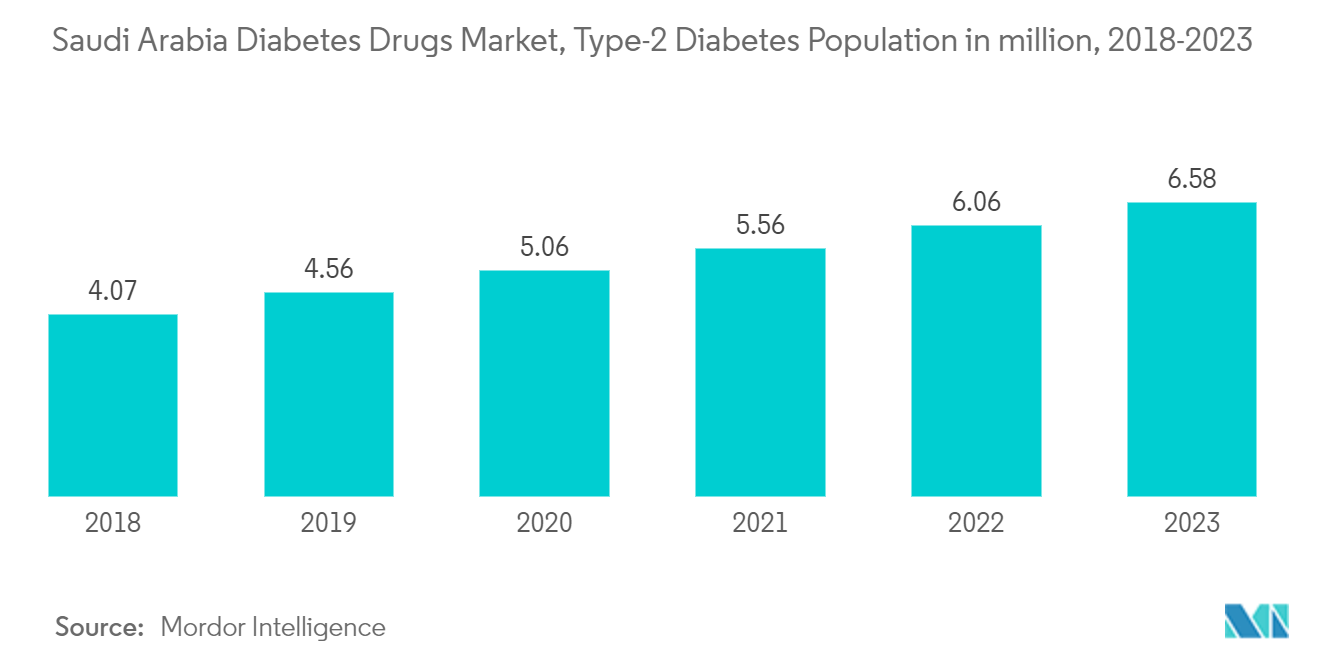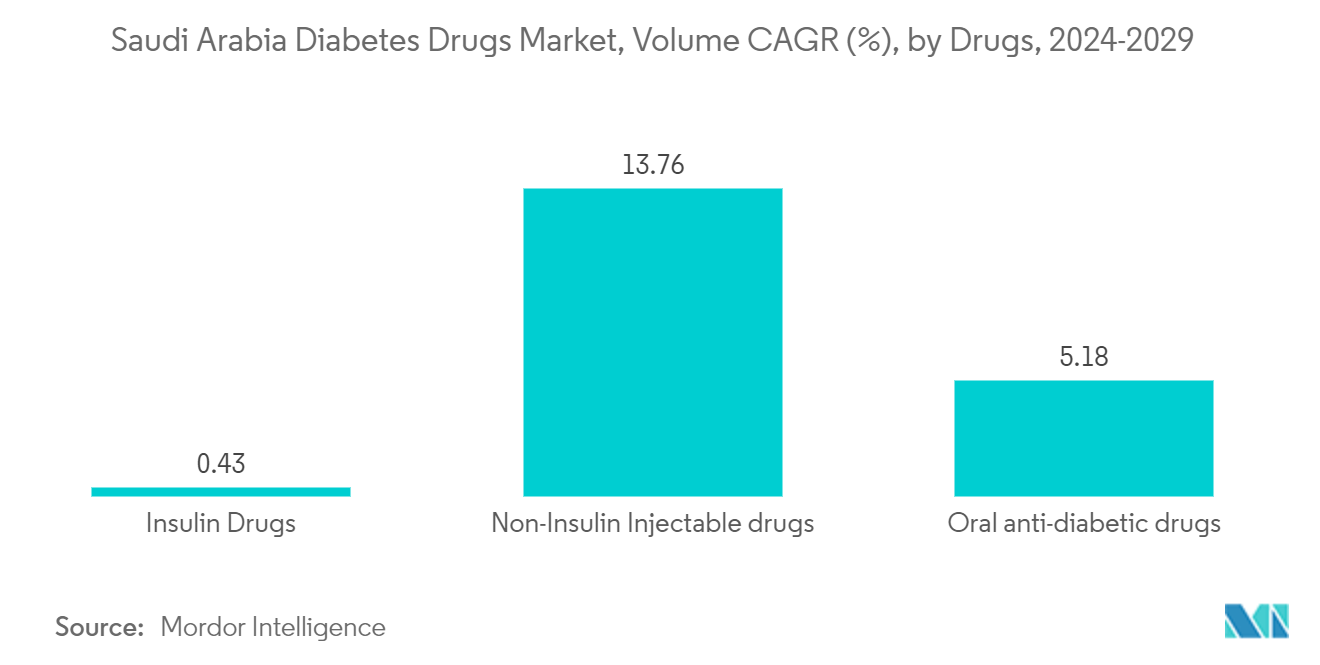Market Trends of Saudi Arabia Diabetes Drugs Industry
The oral anti-diabetic drugs segment holds the highest market share in the Saudi Arabia Diabetes Drugs Market in the current year
The oral anti-diabetic drugs segment holds the highest market share of about 78.4% in the Saudi Arabia Diabetes Drugs Market in the current year.
Oral Anti-Diabetic Drugs are available internationally and are recommended for use when escalation of treatment for type 2 diabetes is required along with lifestyle management. Oral agents are typically the first medications used in treating type 2 diabetes due to their wide range of efficacy, safety, and mechanisms of action. Anti-diabetic drugs help diabetes patients control their condition and lower the risk of diabetes complications. People with diabetes may need to take anti-diabetic drugs for their whole lives to control their blood glucose levels and avoid hypoglycemia and hyperglycemia. Oral anti-diabetic agents present the advantages of easier management and lower cost. So they became an attractive alternative to insulin with better acceptance, which enhances adherence to the treatment.
Diabetes is one of the largest health problems in Saudi Arabia. This country is ranked among the top 10 countries in the world concerning the prevalence of diabetes. Obesity, especially central obesity and increased visceral fat due to physical inactivity, and the consumption of high-calorie, high-fat, and high-sugar foods are the major contributing factors to diabetes. The most prominent work culture perpetuated in the country, which includes sitting for hours in one position and consuming fast food with little to no physical activity, is a significant contributor to diabetes in the working-age group.

Sulfonylureas segment is expected to register highest CAGR in the Saudi Arabia Diabetes Drugs Market over the forecast period
The Sulfonylureas segment is expected to register the highest CAGR of about 15.6% in the Saudi Arabia Diabetes Drugs Market over the forecast period.
Sulfonylurea is an oral anti-diabetic drug used to treat type 2 diabetes. People with type 2 diabetes include chronically high blood sugar levels, and sulfonylureas make the body free up more insulin. Sulfonylurea compounds are the second preferred drug to treat Type 2 Diabetes. They are the most used agents due to their lower cost and as a mono-dosing. According to their discovery, these compounds are 1st, 2nd, and 3rd generations and are available for use as Chlorpropamide, Glimepiride, Glipizide, Glyburide, Tolazamide, and Tolbutamide. They function by increasing insulin secretion from pancreatic beta cells.
Saudi Government, in July 2022, announced that Saudi Arabia saw a growing demand for quality healthcare services spurred by changes, including an increasing and aging population and a growing prevalence of lifestyle diseases such as diabetes and obesity. The government and private sector are involved in working on healthcare entities, certifications, and regulations. The government is taking steps to include 100% of Saudi citizens covered by insurance and is working towards ensuring affordability, access, and quality digital healthcare and primary care with cost-effectiveness.
The World Health Assembly Resolution 2022 recommends the integration of prevention and treatment of diabetes into primary health services, developing pathways for a substantial increase in access to insulin, promoting convergence and harmonizing regulatory requirements for diabetes medicines and technologies, and improving diabetes monitoring and surveillance. Furthermore, it involves the WHO advising the Member States to ensure the uninterrupted treatment of people living with diabetes in humanitarian emergencies.
This important milestone provides a global mandate for diabetes efforts for the next decade. The WHO Global Diabetes Compact focuses on reducing obesity and emphasizes improving access to affordable health services and medicines for early diagnosis and treatment of diabetes. Such initiatives are expected to create awareness among the people regarding monitoring and controlling diabetes, thereby enhancing the market prospects in the coming years.


